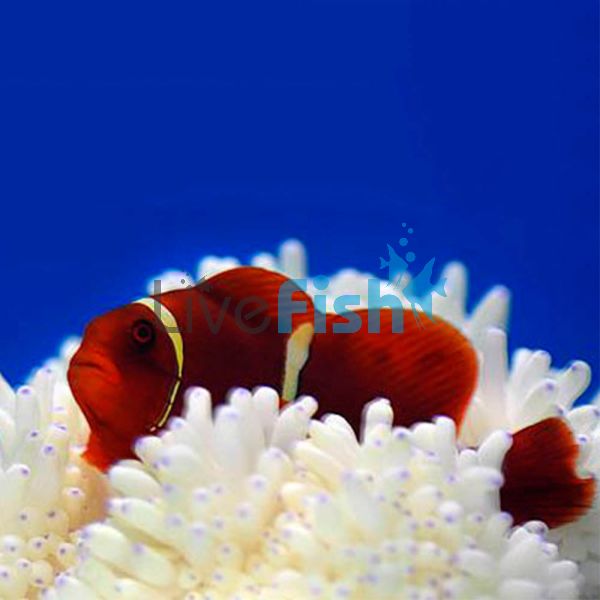Goldstripe Misbar Maroon Clownfish 5cm
Premnas Epigramma
These have been captive bred so stock can be slightly hardier in the Aquarium.
It can reach a maximum size of 17 cm and it can live for more than six years in captivity.
$79.49
Availability:
Out of stock
SKU
SV276050
Natural Range
Maroon clownfish are found in the Indo-Pacific and Great Barrier Reef and the Gold Stripe Maroon clownfish is found in Sumatra, Indonesia.
Max. Size and Longevity
It can reach a maximum size of 17 cm and it can live for more than six years in captivity.
Water Parameters
Temperature: 24 oC - 26oC
pH: 8.0 ?? 8.4
Specific gravity: 1.020-1.025
Feeding
They are very good eaters. Feed them a varied diet of fresh meaty chopped foods, live and frozen brine and mysis shrimp, Tetra flakes and pellets.
Compatibility
They become very territorial as they mature and are best kept as an individuals or as a mated pair. They are more suited with bold tank mates such as angelfish, tangs triggerfish and wrasses. They will harass small peaceful fish (including other clownfish species).
Colour and Varieties
Maroon clownfish have striking deep maroon colour with three distinctive white stripes on them. The Gold Stripe clownfish is very similar apart from the bands which are thicker and yellow in colour. Both species are available as captive bred and wild caught.
General Information
The two spines on the gill cover give the maroon clown fish its species name biaculeatus (meaning spine cheek), which also poses a handling problem as the spines can become tangled in the net when catching. They do not need a host anemone to survive, but are generally not fussy about what type of anemone they live in if one is provided. The Gold Stripe clownfish is a recent discovery to the genus Premnas. Captive bred Goldstripe Maroons take a while to develop the gold colouration of the stripes, it usually occurs a while after they have paired up in an established tank.
Sexing and Breeding
Maroon clownfish have successfully bred in captivity. Males are redder, and diminutive in appearance and less aggressive when compared to the females. Clown fish are protandrous hermaphrodites, meaning they have the ability to change sex when the dominant female dies or is removed from the tank. A larger male will turn into a female and develop a deep maroon colour as the transition takes place, the most dominant juvenile in the tank will then transform into a male.
Handy Hints for success
Tank bred fish are hardier than wild caught fish but both are very aggressive. It is best to keep an eye on them to observe any territorial behaviour. To curb their aggression, either add them last to the tank or rearrange the dcor when introducing them in to the tank.
Common diseases or problems
Clownfish caught from the wild are susceptible to diseases such as white spot (Cryptocaryon irritans), velvet (Oodinium ocellatum) and brooklynella hostilis. White spot and velvet can be treated with a copper based remedy and brooklynella can be treated with a multicure (ensure invertebrates are not present with both medications). It is best to quarantine your fish before putting them in your main system.
| Scientific Name | Premnas Epigramma |
|---|
Write Your Own Review




